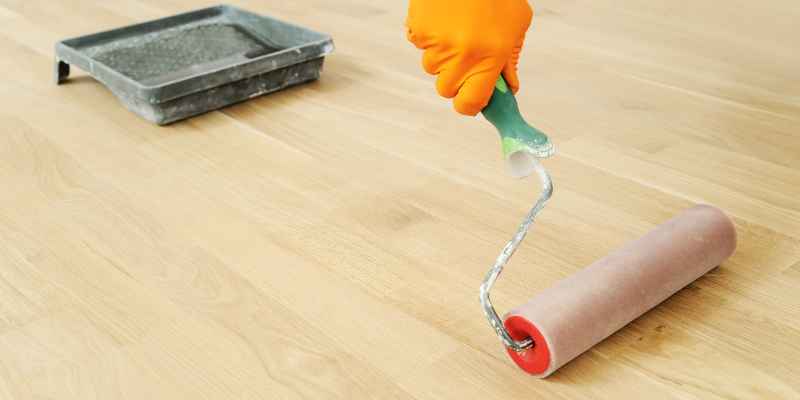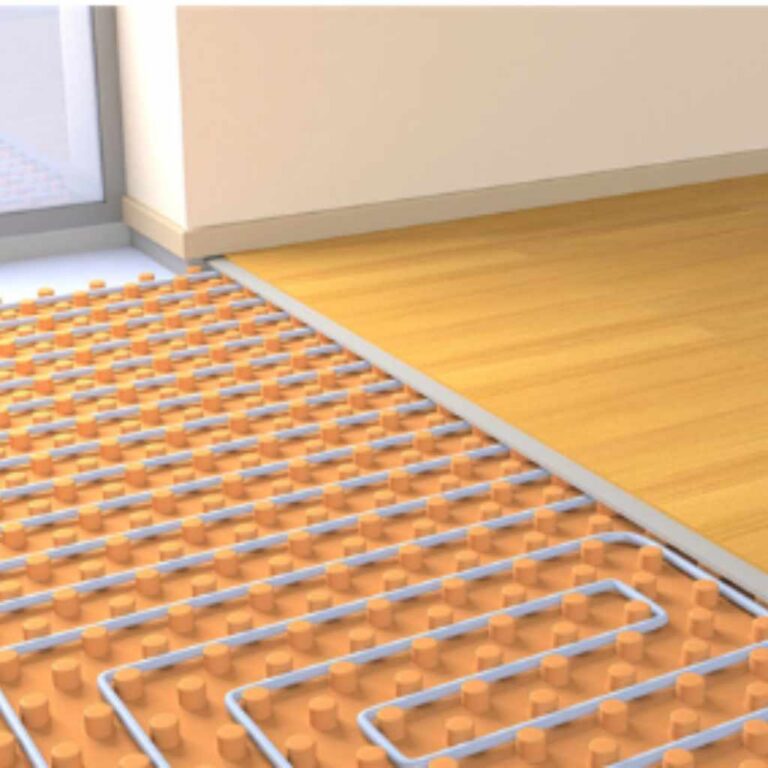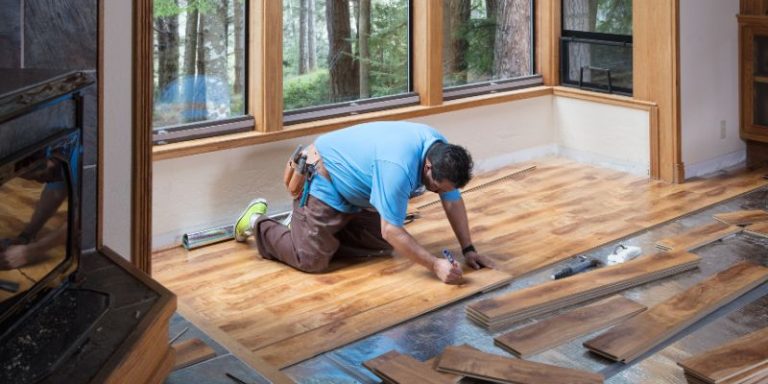How to Remove Paint from Wood Floor Without Damaging Finish: Easy Tips
Use a damp cloth with mild soap to gently scrub the paint. Avoid harsh chemicals to protect the wood finish.
Removing paint from a wood floor without damaging the finish can be tricky. It’s essential to use gentle methods to preserve the wood’s integrity. Start by identifying the type of paint and its age, as this will influence the best removal technique.
Water-based paints are easier to remove compared to oil-based ones. Use a soft cloth, mild soap, and warm water to gently scrub the affected area. For stubborn spots, a plastic scraper or a commercial paint remover designed for wood can help. Always test a small, hidden area first to ensure no damage occurs. Patience and care are key to maintaining the wood’s beautiful finish.
Introduction To Paint Removal From Wood Floors
Removing paint from wood floors needs care. Start by checking the paint type. Water-based paint is easier to remove. Oil-based paint needs more effort. Always test a small area first. This helps avoid damage. Use gentle methods before harsh ones. Gather all needed tools and materials. Wear gloves for protection. Ventilate the area well. Keep a damp cloth handy. Clean spills quickly to avoid staining.
Preserving the wood finish keeps it looking new. This saves you money. No need to refinish the floor often. It also keeps the wood strong. The floor lasts longer with proper care. A good finish protects from scratches and moisture. This helps maintain the floor’s beauty. Clean floors also improve home value. A well-kept floor adds charm to any room.
Types Of Paint Stains On Wood Floors
Water-based paint is easier to clean. Use a damp cloth to wipe. If the paint is dry, use a plastic scraper. Be gentle to avoid scratches. Warm soapy water helps to loosen paint. Pat the area dry after cleaning.
Oil-based paint is harder to remove. Use a soft cloth with mineral spirits. Rub gently to avoid damage. Test the solvent on a hidden spot first. For stubborn marks, use a plastic scraper. Clean the area with a mild soap after.
Pre-cleaning Preparations
Get a soft cloth and some warm water. You need a gentle detergent. Find a plastic scraper for this job. A bucket will also be needed. Have paper towels ready. You may need a vacuum cleaner. Get a pair of gloves to protect your hands.
Cover nearby furniture with plastic sheets. Use painter’s tape to secure the sheets. Lay down old newspapers on the floor. This will catch any spills. Move any small items out of the area. Close windows to keep dust away. Make sure the area is well-lit.
Testing The Wood Finish
Different wood finishes react to paint removal. Common finishes include varnish, lacquer, and oil. Each finish type needs a unique approach. Varnish is shiny and hard. Lacquer is also shiny but thinner. Oil finishes look natural and are soft. Knowing the finish type helps prevent damage. Try to learn about the wood finish first.
Spot tests help check the finish reaction. Choose a hidden wood area for testing. Apply a small amount of cleaner. Wait and see the wood’s reaction. If the finish does not change, it is safe. Repeat the test if unsure. Always test before applying any cleaner broadly.

Manual Paint Removal Techniques
Use a plastic scraper to remove paint. Hold the scraper at an angle. Gently push it under the paint. Avoid using metal scrapers. Metal can scratch the wood. For stubborn spots, use a putty knife. Make sure it has a dull edge. Work slowly to avoid damage.
Use fine-grit sandpaper for paint removal. Rub the sandpaper gently on the paint. Sand in the direction of the wood grain. Avoid using coarse sandpaper. Coarse paper can damage the finish. For small areas, use a sanding block. A power sander can be used for larger areas. Use light pressure to avoid damage.
Chemical Solutions And Solvents
Find a chemical remover made for wood surfaces. Look for water-based removers. These are safer for wood finishes. Read the label carefully before buying. Choose one with low odor if possible. Test the remover on a small area first. Ensure it does not harm the finish.
Always wear gloves and goggles. Work in a well-ventilated space. Apply the chemical remover with a brush. Let it sit for the time on the label. Use a plastic scraper to remove the paint. Wipe the area with a damp cloth. Dispose of all waste safely.
Natural And Eco-friendly Alternatives
Mix equal parts of vinegar and water. Add fresh lemon juice to the mix. Use a soft cloth to apply the solution. Gently scrub the paint spots. The acid helps to break down the paint. Ensure the cloth is not too wet. Excess water can harm wood floors.
Use a heat gun to soften the paint. Hold the gun a few inches away. Move it in a circular motion. The paint will start to bubble. Use a plastic scraper to lift the paint. Be careful not to burn the wood. Always work in a well-ventilated area.
Post-removal Cleaning And Maintenance
Safely remove paint from wood floors by using a gentle, non-abrasive approach. Utilize a heat gun or chemical paint remover to protect the finish.
Polishing The Wood Surface
Make sure the wood surface is clean. Use a soft cloth to wipe dust. Apply a small amount of wood polish. Rub the polish in circular motions. Let the polish dry for a few minutes. Buff the surface with a clean cloth. The wood will shine and look new.
Long-term Floor Care
Keep the floor free of dirt. Use a soft broom to sweep daily. Avoid using harsh chemicals. Place mats at doorways to catch dirt. Clean spills immediately to prevent stains. Polish the floor once a month. Regular care keeps the wood looking great.
Troubleshooting Common Challenges
Use a plastic scraper to remove paint from wood. Apply gentle pressure to avoid damage. Try using warm soapy water for mild stains. For tougher stains, use a commercial cleaner. Test it on a small area first. Always follow the product instructions carefully. Patience and persistence are key in this process.
Small scratches can be fixed with a wood touch-up pen. These pens match the floor color. For deeper scratches, use wood filler. Apply it with a putty knife. Smooth the surface and let it dry. Sand the area gently afterward. Apply a wood finish to restore the shine. This will protect the floor from future damage.
Conclusion: Best Practices Recap
Use a plastic scraper to lift paint. Apply gentle pressure to avoid scratches. Dampen a cloth with warm water. Rub the area to loosen paint. Use a mild detergent for stubborn spots. Avoid harsh chemicals that harm wood. Consider using a heat gun carefully. Test any method on a small spot first.
Always clean spills promptly. Use mats at entrances to trap dirt. Sweep or vacuum floors regularly. Use felt pads under furniture legs. Avoid dragging heavy items on wood. Keep humidity levels stable to prevent warping.

Frequently Asked Questions
What Is The Best Cleaner To Remove Paint From Hardwood Floors?
The best cleaner for removing paint from hardwood floors is a mixture of rubbing alcohol and lemon juice. Apply gently.
Can You Remove Paint From Wood Without Damaging The Wood?
Yes, you can remove paint from wood without damaging it. Use a paint stripper or heat gun carefully. Sanding can also help. Always test on a small area first.
How To Remove Dried Paint From Varnished Wood?
Gently scrape dried paint with a plastic scraper. Apply a small amount of denatured alcohol on a cloth. Rub the area until paint softens. Wipe clean with a damp cloth. Dry thoroughly.
Does Vinegar Remove Paint From Wood?
Yes, vinegar can help remove paint from wood. Soak a cloth in vinegar, apply to the paint, and let it sit. Then, scrape the paint off gently.
Conclusion
Safely removing paint from wood floors is achievable with the right techniques. Follow our guide to preserve your floor’s finish. Use gentle methods and appropriate tools for best results. Always test in a small area first. Now, you can enjoy beautifully restored wood floors without damage.







